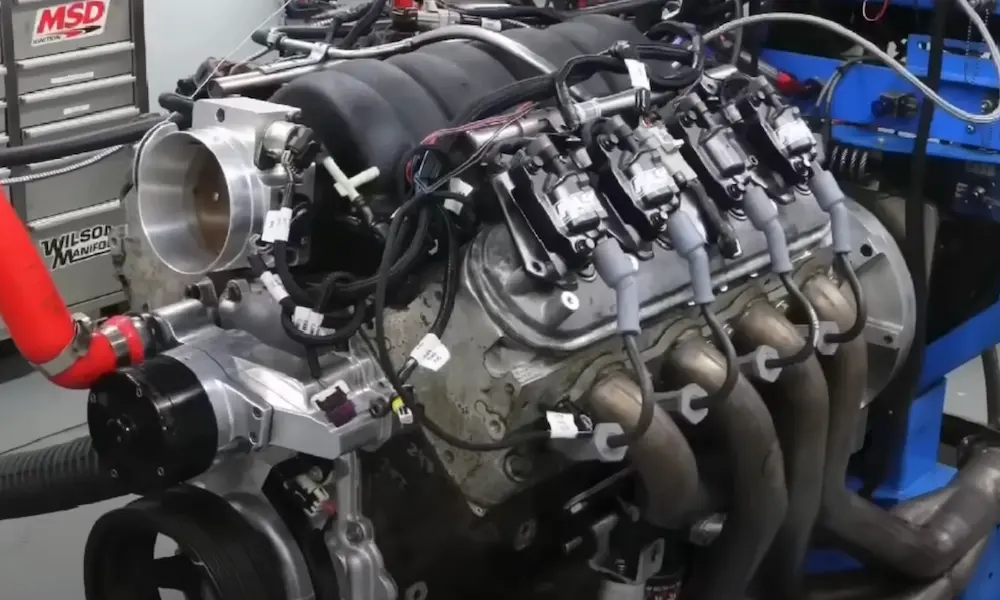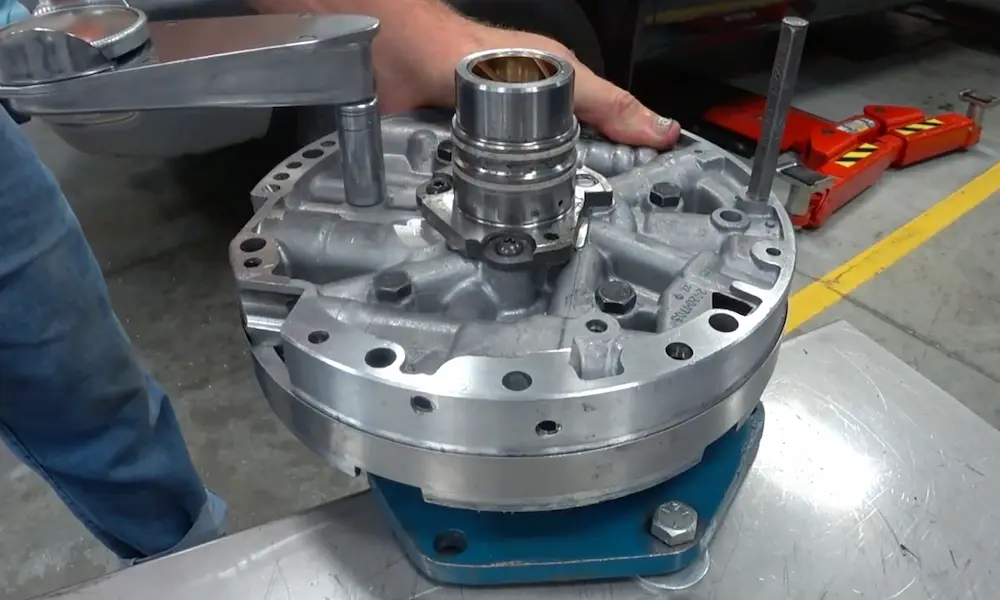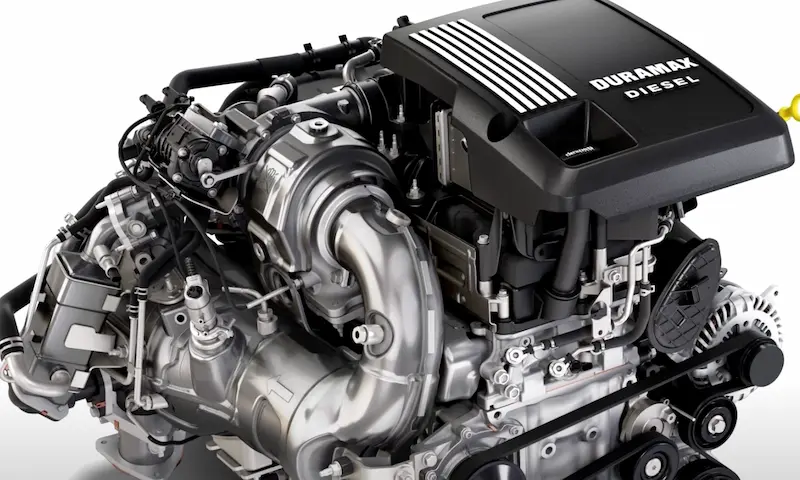Experiencing issues with your Chevrolet Silverado’s transmission can be frustrating. From sudden downshifts to slipping gears, the Chevy Silverado is no stranger to transmission problems. This blog post will help you understand the common transmission issues and how they might be fixed. Stick around to find out how you can get your truck back to smooth operation.
Common Chevy Silverado Transmission Issues
Experiencing transmission issues with your Chevy Silverado can be frustrating. Understanding the symptoms and specific problem areas can help you address them more effectively.
Symptoms of Transmission Problems
Recognizing the symptoms early can save you from costly repairs. Common signs include grinding noises, difficulty changing gears, and shuddering. You might also experience jerking or clunking noises when shifting. Watch out for transmission fluid leaks under your truck, which could indicate an issue.
In addition, keep an eye on your transmission fluid. If it’s dark or has a burnt smell, it may be time to get it checked. Faulty sensors, like the throttle position sensor, may also lead to symptoms such as rough shifting or delayed responses.
Shifting Problems and Slipping Gears
Many Chevy Silverado owners report shifting problems. You may notice the transmission slipping—where it shifts in and out of gear unexpectedly. This is often felt as a loss of power while driving. The eight-speed automatic and 10-speed automatic transmissions, in particular, have had reports of this issue.
If you’re experiencing hard shifts, especially when the vehicle downshifts, it could be a sign of a pressure problem. Another related symptom is the vehicle getting “stuck” in a gear, causing poor acceleration. Jerking during shifts is also a common complaint.
Torque Converter and Solenoids Issues
The torque converter plays a crucial role in your transmission’s performance, and its failure can lead to major issues. Signs of a failing torque converter include shuddering when driving at high speeds or a slipping sensation.
Shift solenoids control the flow of transmission fluid and can also contribute to shifting problems. Faulty solenoids may cause rough shifting or prevent the transmission from shifting altogether. If the solenoids fail, the Transmission Control Module might not get the correct signal, leading to erratic behavior.
Valve Body and Hard Shifts Concerns
The valve body is a key component in regulating transmission fluid flow. Issues here can lead to hard shifts and clunking noises. When the valve body fails, you might experience what’s commonly referred to as “limp mode,” where the transmission only uses a limited number of gears.
Another concern is fluid leaks around the valve body, which can cause pressure problems affecting shift quality. Drivers may notice rough shifting or even grinding noises. Addressing valve body issues promptly is crucial to maintaining your transmission’s health.
Diagnostic and Trouble Codes
When diagnosing transmission issues in your Chevy Silverado, using tools like an OBD-II scan tool and understanding diagnostic trouble codes can make a big difference. These methods help pinpoint problems such as faulty shift solenoids or issues with the vehicle speed sensor.
Using OBD-II Scan Tool for Diagnostics
An OBD-II scan tool is essential for checking your Silverado’s transmission. It connects to your PCM (Powertrain Control Module) to read error codes stored in the system. These codes tell you if something is wrong with the transmission.
Start by plugging the scan tool into the OBD-II port, which is usually under the dashboard. Turn on the ignition but don’t start the engine. The scan tool will then read any stored codes.
Having a clear understanding of how to use this tool can save you time and money. It helps identify issues like a failed shift solenoid or TPS (Throttle Position Sensor) without having to dismantle the transmission.
Interpreting Transmission Diagnostic Trouble Codes
Transmission Diagnostic Trouble Codes (DTCs) are generated by the PCM when an issue is detected. For instance, P0700 signals a problem with the transmission control system.
Another common code is P0706, which indicates a transmission range sensor circuit issue. This may cause erratic shifting or even prevent the car from moving.
Codes are organized typically, such as P16D0, which might refer to specific vehicle models like the 2014 Chevy Malibu but can be similar in concept. Some codes can also indicate problems with the vehicle speed sensor affecting the speedometer.
Knowing what these codes mean is crucial for properly diagnosing issues. By understanding them, you ensure that you address the right problem, saving time and potentially costly repairs.
Maintenance and Solutions
Regular care and quick actions can save you from many common Chevy Silverado transmission problems. Key actions include routine maintenance, handling fluid leaks, and staying updated on the latest software changes and recalls.
Routine Transmission Maintenance
Regular maintenance is crucial for keeping your Chevy Silverado’s transmission in good shape. You should perform fluid flushes every 30,000 to 60,000 miles. This helps remove any debris and keeps the transmission fluid clean and effective.
Changing the transmission filter as part of your routine upkeep can prevent wear and tear. The filter catches debris that could cause serious issues if left unchecked. Over time, clogged filters can lead to transmission overheating and other problems.
Addressing Fluid Leaks and Filter Replacement
Keeping an eye on fluid levels and leaks is important. Low fluid levels or dirty fluid can cause significant issues, including slipping gears and delayed shifting. Always ensure that your transmission fluid is at the correct level and clean.
If you notice a leak, get it checked immediately. Fluid leaks may result from worn-out seals or gaskets, and ignoring them can result in bigger, costlier repairs. Using the right type of transmission fluid for your model ensures optimal performance and longevity.
Software Updates and Recalls
Chevrolet often issues software updates to fix known issues with electronically-controlled transmissions. Keeping your vehicle’s software up to date can prevent problems before they start.
Be vigilant about recalls. For instance, a recent recall was issued to fix a sudden downshift issue in the 2018 Silverado eight-speed transmission. Keeping an eye on such recalls and taking swift action can save you both time and money in the long run.
By staying proactive with your Chevy Silverado’s transmission maintenance, you can ensure a smoother, more reliable ride.
Structural and Design Issues
Chevy Silverado’s transmission problems have been a recurring issue, especially in certain models. These issues often lead to costly repairs, legal actions, and recalls. Understanding the history and the legal implications can help you make informed decisions.
Historical Problems with Silverado Transmissions
The Chevrolet Silverado 1500 has a history of transmission issues. Models from 2007 to 2013 frequently face problems like the loss of 1st or 4th gear. This is often due to failed shift solenoids or wiring problems from the PCM to the transmission. Another common issue is the transmission entering “limp home” mode, which restricts the vehicle to 2nd, 3rd, and reverse gears.
Newer models, particularly the 2018 Silverado with the eight-speed transmission, have faced complaints about sudden downshifts into the first gear. This has raised safety concerns and led to recalls. For instance, some 2020 Silverado models faced recalls due to suspect driveshafts. These issues highlight the importance of routine checks and immediate troubleshooting to maintain vehicle performance.
Notable Lawsuits and Recalls
General Motors and Chevrolet have faced several lawsuits and recalls due to transmission issues in the Chevrolet Silverado. One significant recall involved the 2018 Silverado’s eight-speed transmission, where sudden downshifts into first gear posed serious safety risks. GM issued a recall to address these complaints.
In addition to recalls, there have been numerous lawsuits from frustrated owners. Many legal actions focus on the transmission’s hesitation and shuddering issues, especially in models equipped with the eight-speed automatic transmission. These lawsuits seek compensation for the repetitive costs incurred for repairs and the inconvenience caused by recurring problems.
If you own a Silverado or are considering purchasing one, it’s crucial to stay updated on these issues. Regularly check for recalls and be proactive in addressing transmission problems to avoid potential safety hazards and additional costs.














